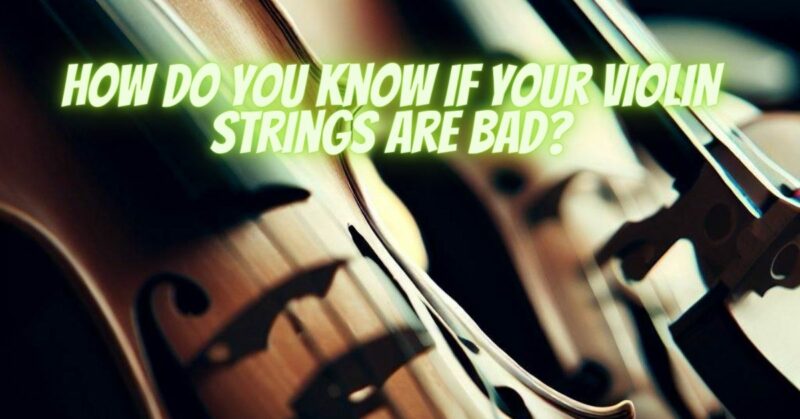Violin strings play a crucial role in the overall performance and sound quality of your instrument. Over time, strings wear out and lose their optimal tonal characteristics, affecting your playing experience. Recognizing the signs of worn-out violin strings is essential for maintaining a vibrant sound and ensuring maximum playability. In this guide, we will explore the key indicators that can help you determine if your violin strings are in need of replacement.
- Dull or Muffled Tone:
A significant indicator of worn-out strings is a noticeable decline in tone quality. As strings age, they lose their brilliance and vibrancy, resulting in a dull or muffled sound. If you find that your violin produces a lackluster tone, lacking depth and richness, it may be a sign that your strings need to be replaced.
- Reduced Responsiveness:
Worn-out strings may exhibit reduced responsiveness, making it more challenging to achieve the desired dynamics and articulation. You may notice that the bow doesn’t grip the strings as well, leading to difficulties in controlling the sound and expressing nuances. If you feel that your violin’s strings are less responsive or lack the desired clarity, it may be time for new strings.
- Unwanted Noises or Squeaks:
Strings that are past their prime can produce unwanted noises, such as squeaks, whistling sounds, or excessive bow noise. These noises can detract from the overall sound quality and interfere with your playing. If you consistently encounter squeaking or unusual noises while playing, it is likely an indication that your strings have deteriorated and should be replaced.
- Visible Signs of Wear:
Inspecting the physical condition of your strings can provide valuable information. Look for signs of wear, such as fraying, unraveling, or visible grooves in the winding. If your strings appear worn, damaged, or show signs of corrosion, it is a clear indication that they are in poor condition and need to be replaced.
- Difficulty in Holding Tune:
Strings that have lost their elasticity may struggle to hold their tune. If you find that your violin requires frequent tuning adjustments, or if the strings consistently fail to hold their pitch, it is a strong indication that it’s time to invest in new strings. Fresh strings will provide better tuning stability and minimize the need for constant retuning.
- String Age and Usage:
Consider the age and usage of your current strings. Strings have a finite lifespan, and even with proper care, they wear out over time. If it has been several months or longer since you last changed your strings, or if you have been playing extensively, it is advisable to consider replacing them.
Recognizing the signs of worn-out violin strings is crucial for maintaining optimal sound quality and playability. If you notice a dull or muffled tone, reduced responsiveness, unwanted noises, visible signs of wear, difficulty holding tune, or if your strings are significantly aged, it is a clear indication that your strings need replacement. Regularly assessing the condition of your strings and listening to the feedback from your instrument will help you determine when it’s time to invest in new strings. By replacing worn-out strings, you can revitalize your violin’s sound and enjoy an enhanced playing experience.


